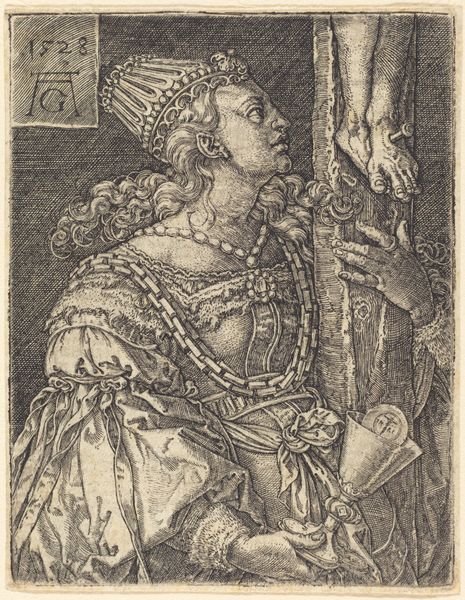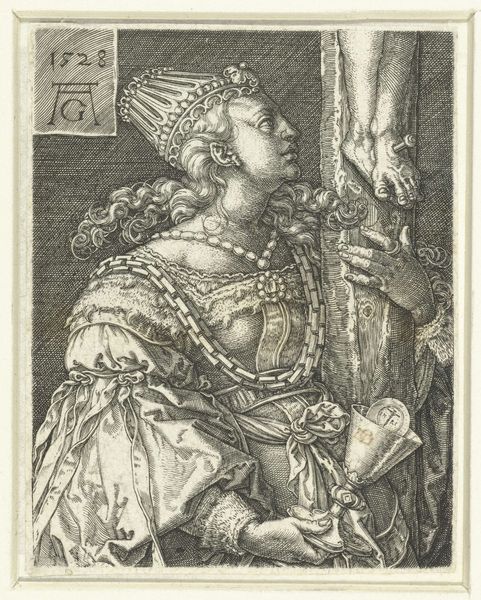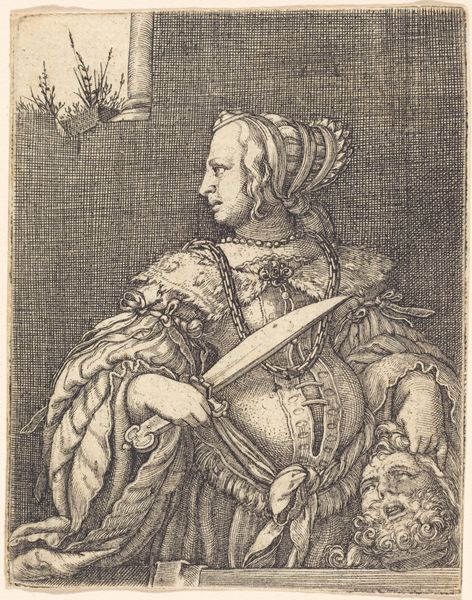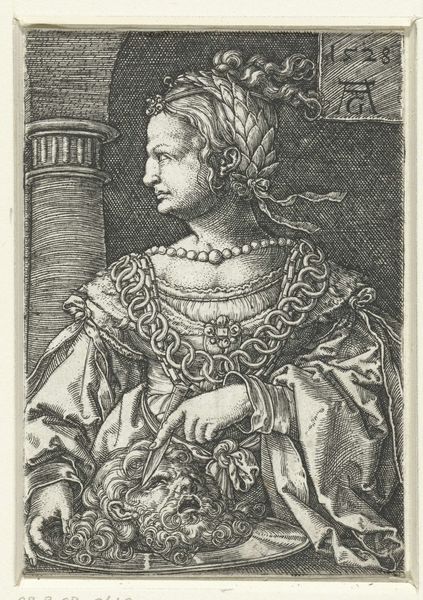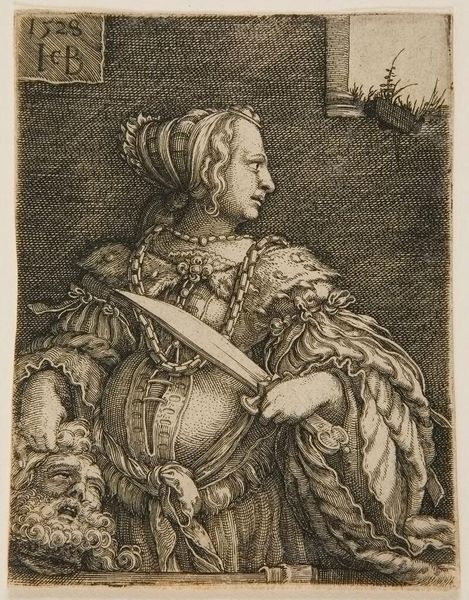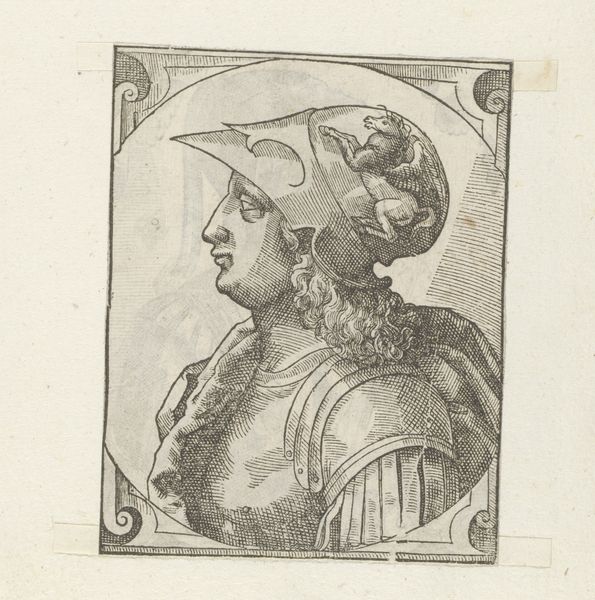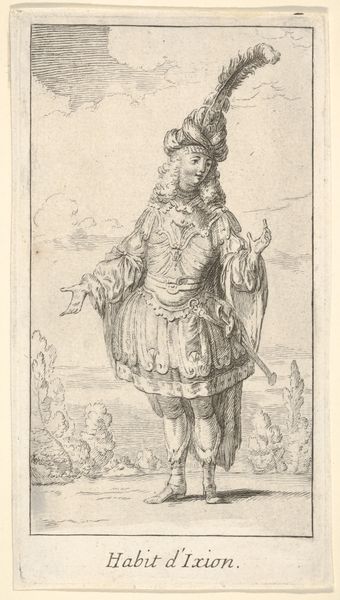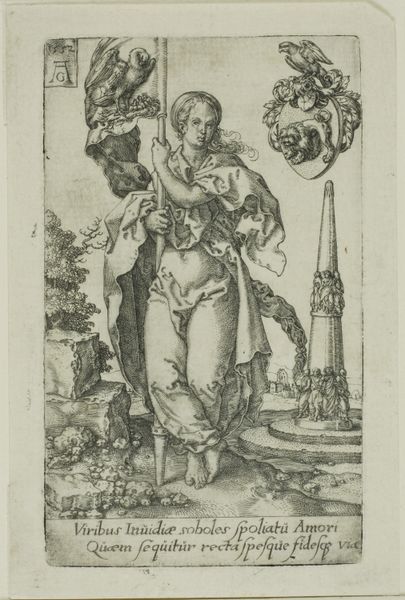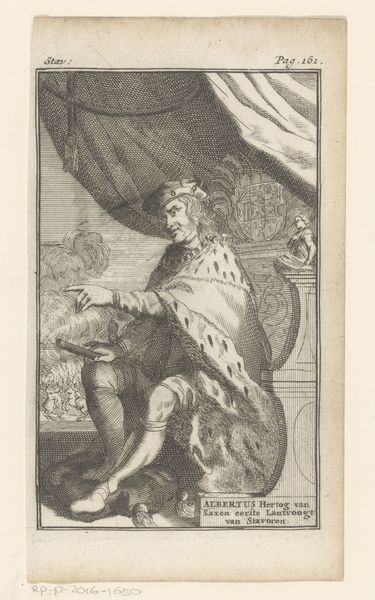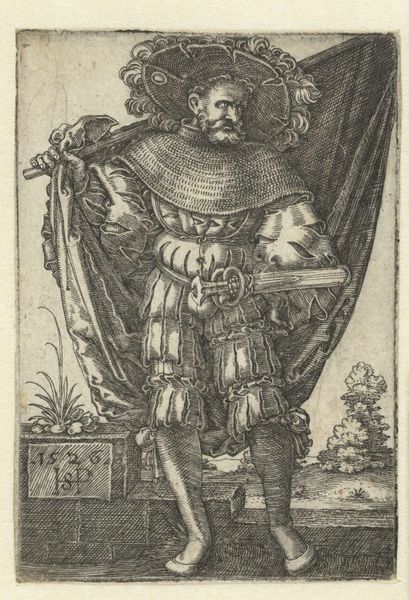
print, engraving
# print
#
figuration
#
line
#
history-painting
#
northern-renaissance
#
engraving
Dimensions: height 83 mm, width 63 mm
Copyright: Rijks Museum: Open Domain
Jacob Binck created this engraving of Judith with the head of Holofernes in 1528. Here, Judith is shown with the head of Holofernes, a symbol of triumph over adversity. This victorious representation is powerful, but it is also tied to complex feelings about strength, bravery, and the struggle for justice. The act of decapitation, and the display of the severed head, echo through art history, appearing in other contexts like the beheading of Medusa. In that instance, the symbol evolves into a more sinister representation of power and control. The head transforms from a trophy of righteousness to a symbol of fear and dominance, reflecting the dark aspects of human nature. Such images resonate deeply, engaging viewers on a subconscious level, evoking primal feelings linked to mortality, strength, and survival. They are more than mere illustrations; they are emotional signifiers, touching our deepest fears and aspirations. These symbols resurface, evolving, and taking on new meanings throughout history.
Comments
No comments
Be the first to comment and join the conversation on the ultimate creative platform.
